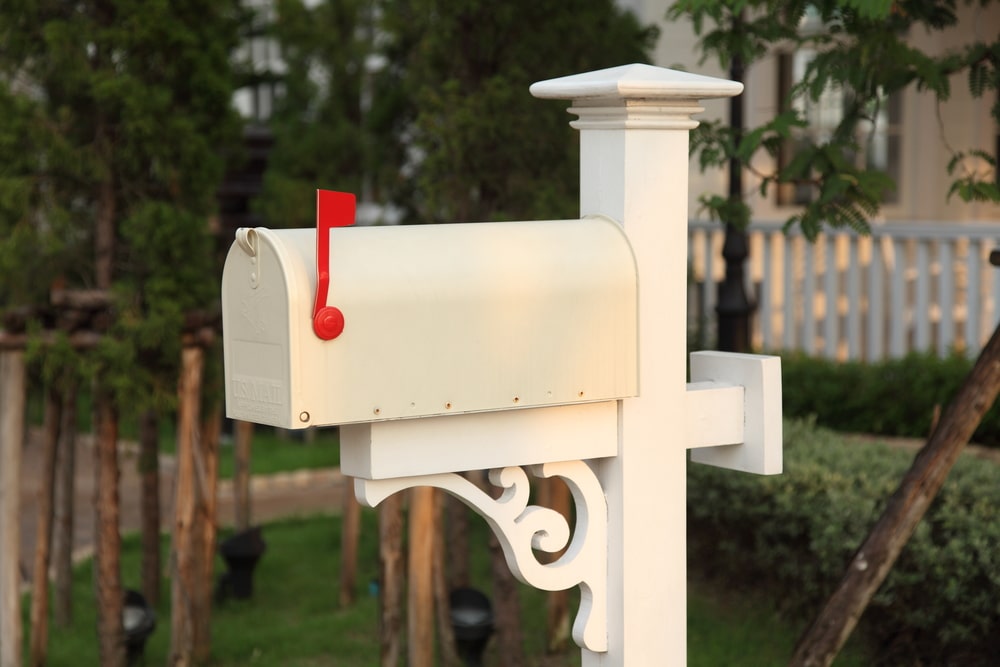There are many different forms of real estate marketing that investors can turn to generate leads. A yellow letter might be one of the most powerful, if not often confusing, forms out there.
While many investors may have a passing knowledge of real estate bandit signs, real estate door hangers—even good, old real estate blogging—one of the most effective methods of direct mail marketing is the yellow, handwritten letter.
But how do they work? What’s the best way to use yellow letters? Why are they such an effective form of real estate content marketing? (Yes! Real estate yellow letters are content!)
Here’s a quick primer on the what’s, why’s and where’s of adding “color” to your real estate marketing efforts.
What Are Yellow Letters?
Yellow letters are direct mail letters handwritten (or presented to “look” handwritten) on yellow-lined paper, such as that from a legal pad. It’s a form of direct mail marketing that can prove devastatingly effective for real estate investors looking for leads. (Mostly because this form of marketing doesn’t “scream” it’s marketing.)
[ Do you have what it takes to run your own real estate business? Register for a FREE webinar, where you can learn from experts how to replicate successful business systems. ]

Yellow Letter Marketing Pros
There are many advantages to using real estate yellow letters; some tangible, some more psychological in nature. Here are some reasons why you might want to consider their use:
-
Higher Leads & Conversions: Despite the proliferation of online marketing channels, such as social media real estate campaigns, yellow letter campaigns are still used today, in a variety of business niches. That’s because, despite an abundance of “junk mail,” 41 percent of Americans still look forward to seeing the contents of their mailbox every day. According to a study by the U.S. Postal Service (USPS), 34 percent of businesses using direct mail received the strongest customer acquisition from that form. (With conversion rates for “yellow letters” nearly 65 percent higher than regular direct mail pieces.)
-
Personalize: Yellow letters cut through the noise of busy email inboxes that ping and often annoy users throughout the day with one email marketing campaign after another. One of the best things about direct mail is, according to Gallup, that 90 percent of Americans still enjoy receiving personal letters and cards. Yellow letters stand out among a pile of junk mass mail, produced by institutions like banks or insurance companies, because it still has the look and feel of a personal letter—but packed with a message that can help boost your business.
-
Pique Interest: The yellow-lined paper, seen through most envelopes, generates curiosity in a prospect. It’s not your typical junk mail printed on white stock paper and sent in white standard envelopes. And since, according to the USPS, 77 percent of consumers still actually pick up and sort their mail physically.
-
Measurable: You can easily measure the performance of a yellow letter direct mail campaign. It’s just a matter of listing down who called, or emailed a response, to your yellow letter. (And with measurability comes the ability to tweak and improve a campaign to ensure it gives you the best ROI.)
Yellow Letter Marketing Cons
As with every real estate marketing campaign, yellow letters also come with disadvantages. This includes the fact they are:
-
Time-Consuming: Compared to printing out business letters, handwriting yellow letters for each of your prospects take significantly more time. (Especially if you decide to save expenses and do them yourself.)
-
Expensive: Compared to printing out business letters, handwriting yellow letters for each of your prospects take significantly more time. (Especially if you decide to save expenses and do them yourself.) Sending out yellow letters, especially if you employ the help of a company that specializes in producing them en masse, require extra capital, more than needed for a typical direct mail campaign. How much more? Each letter can cost at least $0.77, depending on the company used. (Far more expensive than simply for “driving for dollars.”)
-
May Not Be Received Well: While a lot of people appreciate a more personal letter rather than a generic, mass-produced one, there are still those who would react negatively upon receiving your yellow letter. You might get angry responses, accusations of aggressive marketing tactics, or your letter might be tagged as unprofessional for being handwritten in the first place.
Effective Yellow Letter Sample
When you’ve decided to take the leap to create yellow letters, here’s a step-by-step guide to help you get started on your first campaign:
1. Know Your Audience
The best place to start your yellow letter campaign is by researching your target audience. Most often, this is going to involve identifying motivated sellers in your target market. Motivated sellers are homeowners who may be inclined to accept offers and sell their home, even if the property is not necessarily on the market. For example, if someone recently inherited a property, they may need to sell the home quickly to avoid having to maintain the property or to cover other costs.
It is also a good idea to research property owners with outstanding mortgage payments, tax liens, or homeowners facing foreclosure. These are all signals that the owner may need to sell the property fast. Try researching this information through your county’s public records offices. Information about tax liens and foreclosures is typically readily available online.
Take note of the homeowners you plan to target in your yellow letter campaign. By taking time to understand who your audience is, you can increase your chances of successfully converting them into leads. Know why they might consider selling and approach the letter with sensitivity. Use language that will help relate to the person reading the letter. These components will help you build a quick connection and potentially acquire a new property.
2. Write Your Drafts
The next step is to write a draft of your letter’s content by keeping the following in mind:
-
Length: Long messages might bore a recipient. Remember human beings have an 8-second attention span, shorter than that of a goldfish, so, ideally, keep your letter to less than 120 words. When they call, that’s when you can explain your services in more detail.
-
Word usage: Short and simple will usually do the trick. Prospects will often lose interest if your letter sounds complicated. (Long-form sales letters can be used on “warmer” leads, already familiar with you.)
-
Important information: Don’t forget to include your contact details (e.g. phone number, email, etc.) so they can contact you. Make it easy for them to reach out to you.
3. Create The Letters
Now that you have the letter’s content down, you need to start creating them. Below are options you can explore, depending on how many letters you need to send, and how much time you have:
-
Write them yourself: This is the usual route of investors who only have a small targeted list of prospects, and are a bit limited on funds.
-
Hire someone else to write the letters: Alternatively, you can pay someone else (a college kid or anyone needing extra cash) to help you write them.
-
Photocopy technique: Write the body of the letter while leaving spaces for your prospect’s name and address. Photocopy that letter as many times as needed. Finally, write down the missing details on the blank spaces.
-
Enlist a yellow letter company: If you have a lot to send out, you can always hire a company who specializes in yellow letters to do it for you, like Yellow Letters or Go Big Yellow Letter.
4. Track Your Data
This strategy, as with any other campaign, needs to be tracked so you can evaluate its performance. Among the key metrics you need to track include the number of letters you send out, how often you send them, and how long you’ve been sending them.
Next, track the responses you’re getting (e.g., phone calls, emails). Always answer calls and respond quickly to emails. Aim to find out what a home seller wants and what their timeline is.
If you aren’t getting any responses, then look at your strategies and start modifying your letter. (Your message to market match may be off.)
5. Conduct Split Tests
Split tests help sharpen your technique, so you can keep improving your response rate. Start by sending out two different letters to the same customer demographic. Each set of letters will have a different message and design. Find out which set delivers the best response rate and repeat that technique with other prospects.

Summary
The more technologically-advanced the world gets, the more we humans crave authentic communication. A yellow letter is a great bridge between marketing automation and personal one-on-one dialogue.
Though there may be a bit more expense involved with yellow letters, these powerful forms of real estate marketing might be the best way to cut through a crowded market and find those deals that require a more human, personalized touch.
Ready to start taking advantage of the current opportunities in the real estate market?
Click the banner below to take a 90-minute online training class and get started learning how to invest in today’s real estate market!


